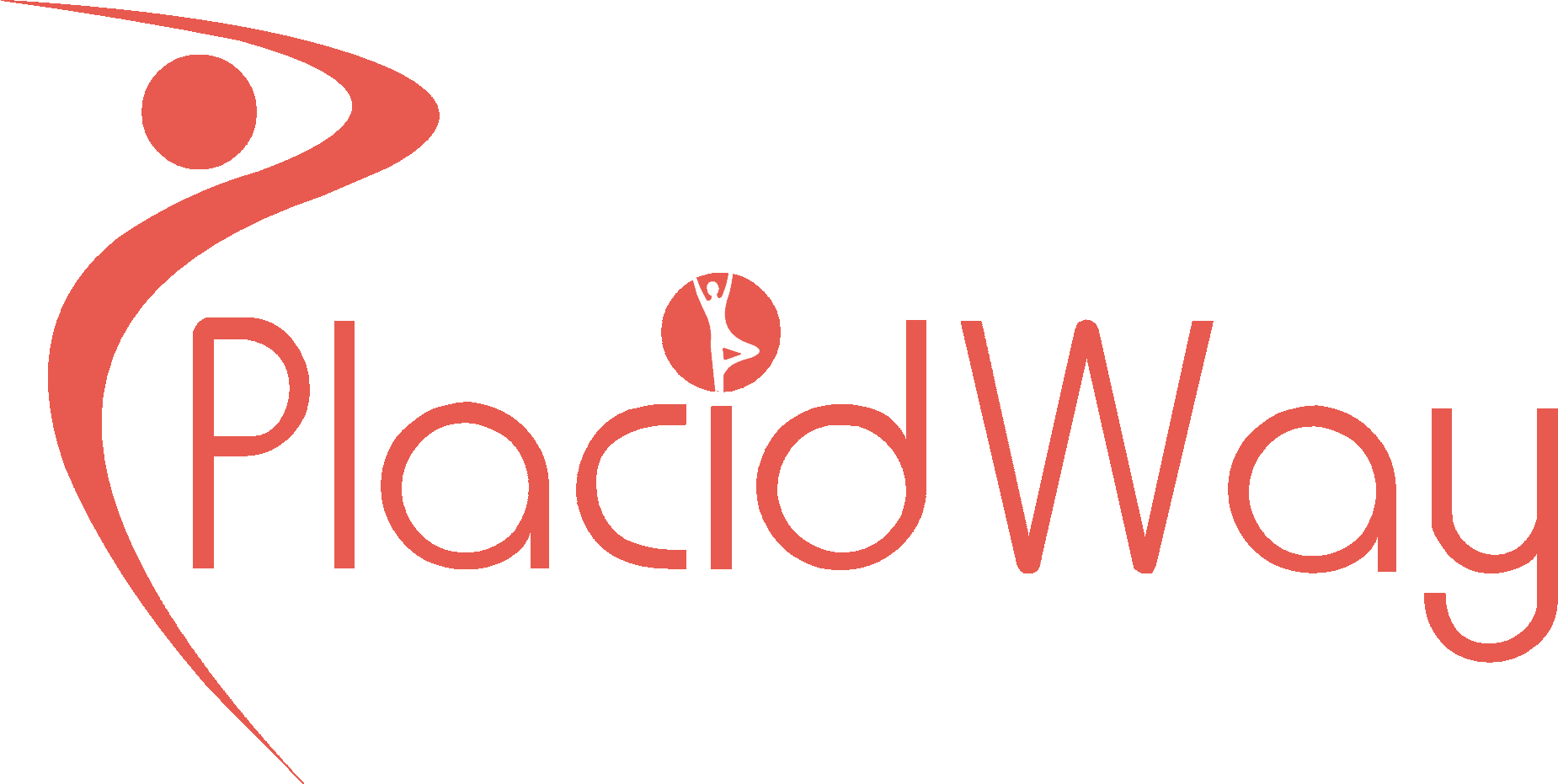Affordable Sleeve Gastrectomy Packages in Mexico

Are you tired of battling with your weight? Have diets and exercise plans failed you time and time again? Maybe you've looked into weight loss surgery, only to be put off by the incredibly high costs in the US or Canada. What if there was a way to get safe, effective, and high-quality gastric sleeve surgery for a fraction of the price? For thousands of people just like you, the answer lies just south of the border: Gastric Sleeve surgery in Mexico.
Losing significant weight isn't just about looking better; it's about feeling better and reclaiming your health. Excess weight can lead to serious problems like type 2 diabetes, heart disease, high blood pressure, and sleep apnea, making everyday life difficult. If you're ready for a real change, exploring gastric sleeve surgery could be the first step towards a healthier, happier you. This guide will walk you through everything you need to know about getting VSG in Mexico.
What Exactly is Gastric Sleeve (Vertical Sleeve Gastrectomy) Surgery?
So, what happens during a gastric sleeve, or VSG, procedure? Think of your stomach like a pouch. During this surgery, a skilled surgeon makes your stomach much smaller. They do this using minimally invasive techniques, often called keyhole surgery (laparoscopy).
The surgeon removes about 70-80% of your stomach permanently. What's left is shaped like a narrow tube or a "sleeve" – hence the name! This smaller stomach can only hold a small amount of food, maybe the size of a small banana.
But it's not just about size. The part of the stomach that's removed is the main area that produces Ghrelin, often called the "hunger hormone." With less Ghrelin, you won't feel as hungry between meals, and you'll feel full much faster when you do eat.
Here’s the simple breakdown:
- Smaller Stomach: You physically can't eat large portions.
- Less Hunger Hormone: You feel less hungry overall and more satisfied after small meals.
Importantly, unlike some other weight loss surgeries (like gastric bypass), the gastric sleeve doesn't usually reroute your intestines. This means your body can still absorb nutrients from the food you eat in a relatively normal way. Your stomach's natural openings also stay intact, helping digestion work as it should, just with a smaller capacity. It’s a simpler procedure focused on restriction and hormonal changes.
Cost of Gastric Sleeve Surgery in Mexico
Gastric sleeve surgery is much cheaper in Mexico. The Cost of Gastric Sleeve Surgery in Mexico is $4,250. That's a big difference compared to the US! Learn more about prices in Mexico.
|
Package |
Cost in USD |
|
$4,600 |
|
|
$7,579 |
|
|
$6,079 |
|
|
$4,250 |
Why Are So Many People Choosing Gastric Sleeve Surgery in Mexico?
Mexico, especially cities like Tijuana right near the border, has become a top destination for high-quality bariatric surgery. You might be wondering why someone would travel for surgery. The reasons are compelling:
You Can Save Thousands of Dollars
Let's be honest, cost is a huge factor. In the United States, gastric sleeve surgery without insurance can easily cost $15,000, $20,000, or even more. For many, that price is simply out of reach.
In Mexico, the same high-quality procedure often costs between $3,995 and $8,900 USD. That's a potential saving of 50-70% or more! These huge savings make life-changing surgery accessible. Many clinics offer all-inclusive packages, covering the surgery, hospital stay, pre-op tests, medications, surgeon fees, hotel nights, and even ground transportation from a nearby US airport (like San Diego for Tijuana clinics). This transparency helps you budget effectively.
Expect High-Quality Care and Skilled Surgeons
Lower cost does not mean lower quality. Mexico boasts many highly experienced, board-certified bariatric surgeons. Many have trained in Mexico, the US, or Europe and have performed thousands of successful sleeve gastrectomies. They are specialists in their field.
Reputable medical facilities in Mexico often use the latest technology and adhere to strict international safety and hygiene standards. Some hospitals even hold certifications like JCI accreditation, which meets or exceeds the standards found in many US hospitals.
Skip the Long Waiting Lists
In countries like Canada or even through some US insurance plans, waiting lists for bariatric surgery can be months or even years long. When you're ready to make a change for your health, waiting can be frustrating and demotivating.
In Mexico, scheduling your surgery is typically much faster. You can often have your procedure within a few weeks of your decision, allowing you to start your weight loss journey sooner.
Enjoy Modern Facilities and Advanced Technology
Top bariatric centers in Mexico are equipped with state-of-the-art surgical tools and technology. They understand the needs of international patients and provide comfortable, modern environments for your surgery and recovery. Laparoscopic techniques (using small incisions and cameras) are standard, meaning less pain, faster recovery, and minimal scarring compared to older open surgery methods.
It’s Closer Than You Think
For Americans, especially those in the southern and western states, traveling to Mexican border cities like Tijuana is incredibly convenient. It might just be a short flight or drive away. Reputable providers arrange seamless transportation from the airport to the hospital and hotel, making the logistics smooth and stress-free.
Could You Be a Good Candidate for Gastric Sleeve?
Gastric sleeve surgery isn't for everyone, but it can be a fantastic tool for the right person. How do you know if it might be right for you? Here are the general guidelines surgeons look at:
- Your Body Mass Index (BMI): Generally, candidates have a BMI of 40 or higher. Sometimes, a BMI between 30 and 39.9 might qualify if you also have serious weight-related health problems (like type 2 diabetes, severe sleep apnea, or heart disease). Calculate your BMI easily online if you're unsure.
- Your Age: Most clinics operate on adults, typically between 18 and 65 or 70 years old. Individual circumstances are always considered.
- Previous Weight Loss Attempts: Surgeons usually want to see that you've tried seriously to lose weight through diet and exercise before, without long-term success.
- Your Health: You need to be healthy enough for surgery and anesthesia. Certain conditions might need careful management or could make surgery riskier.
- Acid Reflux (GERD): Severe, uncontrolled acid reflux might mean gastric sleeve isn't the best option, as it can sometimes worsen reflux. However, if you have a hiatal hernia (often linked to reflux), surgeons can sometimes repair it during the sleeve surgery. This needs careful discussion.
- Commitment: You must be ready to commit to significant, lifelong changes in your eating habits, lifestyle, and follow-up care. Surgery is a tool, not a magic wand.
The only way to know for sure if you're a candidate is to have a consultation with a bariatric specialist. They will review your medical history, discuss your goals, and help you decide if VSG is the best path forward.
The Gastric Sleeve Procedure in Mexico: What Does the Journey Look Like?
Choosing to have surgery abroad might feel daunting, but reputable providers in Mexico have streamlined the process for international patients. Here’s a typical overview:
Step 1: Getting Ready (Pre-Op)
- Consultation: You'll start with an online or phone consultation, reviewing your health history and goals.
- Screening: You may need some basic tests done locally or upon arrival in Mexico to ensure you're fit for surgery.
- Pre-Op Diet: Most surgeons require a special diet for 2-3 weeks before surgery. This is usually a high-protein, low-calorie liquid or partial liquid diet. Its main purpose is to shrink your liver, making the surgery safer and technically easier for the surgeon. Following this diet is crucial!
Step 2: Your Surgery Day
- Arrival: You'll arrive at the modern, clean hospital or surgical center.
- Anesthesia: You'll meet the anesthesiologist and receive general anesthesia, so you'll be completely asleep and comfortable during the procedure.
- The Surgery: The surgeon will perform the gastric sleeve using laparoscopic techniques. They make a few small incisions in your abdomen, insert a tiny camera and specialized tools, and carefully remove about 70-80% of your stomach, sealing the new, smaller sleeve shape. The procedure itself usually takes about 45 minutes to 1.5 hours.
Step 3: Right After Surgery (Post-Op in Mexico)
- Recovery Room: You'll wake up in a recovery area where nurses monitor you closely.
- Hospital Stay: You'll typically stay in the hospital for 1 to 3 nights. This allows the medical team to manage any discomfort, monitor for any immediate complications, and help you start sipping clear liquids.
- Starting Your New Diet: You'll begin with small amounts of clear fluids like water, broth, and sugar-free gelatin.
Reputable providers offer comprehensive support during your stay, including bilingual staff and coordination of your care.
What are the Amazing Benefits of Gastric Sleeve Surgery?
The reason gastric sleeve is so popular is the incredible, life-changing benefits it offers:
Lose a Significant Amount of Weight
This is usually the main goal, and VSG delivers. Most patients lose 50% to 70% of their excess body weight within the first one to two years after surgery. Seeing the numbers drop on the scale is motivating, but the health benefits are even more profound.
Say Goodbye to Weight-Related Health Problems
Obesity often comes with a host of serious health issues. Gastric sleeve surgery can dramatically improve or even completely resolve many of them, including:
- Type 2 Diabetes: Many patients see their blood sugar levels normalize, often reducing or eliminating the need for medication.
- High Blood Pressure (Hypertension): Weight loss significantly lowers blood pressure for most people.
- High Cholesterol: Levels often improve dramatically.
- Obstructive Sleep Apnea: Many patients find they no longer need a CPAP machine after significant weight loss.
- Joint Pain: Less weight means less strain on your knees, hips, and back.
- Heart Disease Risk: Factors contributing to heart disease are significantly reduced.
- Fatty Liver Disease: Can improve or resolve.
- PCOS and Fertility Issues: Many women find their symptoms improve, and fertility can increase.
Feel Less Hungry, More Satisfied
Remember Ghrelin, the hunger hormone? Removing most of the Ghrelin-producing part of the stomach means you genuinely feel less hungry. When you do eat your small, sleeve-friendly portions, you'll feel satisfied much quicker and stay full longer. This makes sticking to your new way of eating much easier.
No Foreign Objects Left Inside
Unlike gastric banding, there's no band or port placed around or in your stomach. This eliminates the need for adjustments and potential complications related to those devices (like band slips or erosion).
Keeps Nutrient Absorption Mostly Normal
Because the path food takes through your intestines isn't drastically changed (like in gastric bypass), your body can still absorb most nutrients relatively normally. While you'll still need vitamin supplements due to the smaller food intake, the risk of severe nutritional deficiencies is generally lower than with bypass surgery.
Boost Your Quality of Life and Confidence
The impact goes far beyond physical health. Imagine having more energy to play with your kids or grandkids, being able to tie your shoes easily, shopping for clothes in regular stores, or feeling more confident in social situations. These are the real-world changes that gastric sleeve patients often celebrate.
Understanding the Potential Risks and Downsides
Like any major surgery, gastric sleeve surgery has potential risks and complications. It's crucial to understand these before making a decision. Reputable surgeons in Mexico have excellent safety records, but risks are always possible, anywhere in the world.
General Surgical Risks (Possible with Any Surgery)
- Bleeding: Excessive bleeding during or after the procedure.
- Infection: Incisions or infection inside the abdomen.
- Blood Clots: Deep vein thrombosis (DVT) in the legs or pulmonary embolism (PE) if a clot travels to the lungs. Risk is higher with obesity.
- Anesthesia Reactions: Negative reactions to the medications used.
- Injury to Nearby Organs: Rare damage to the spleen, esophagus, or other structures.
Risks Specific to Gastric Sleeve
- Staple Line Leak: This is the most serious potential complication, where stomach contents leak from the surgical staple line into the abdomen. It requires prompt treatment, sometimes additional surgery. It's rare with experienced surgeons (often less than 1-2% risk).
- Strictures: Narrowing of the stomach sleeve, which can cause difficulty swallowing or vomiting. This can usually be treated with stretching procedures.
- GERD / Acid Reflux: While VSG can sometimes improve mild reflux (especially if a hiatal hernia is fixed), it can also worsen existing reflux or cause new reflux in some patients. This may require long-term medication.
- Nutritional Deficiencies: Although absorption isn't bypassed, the very small amount of food eaten means you must take lifelong vitamin and mineral supplements (like B12, iron, calcium, vitamin D) to prevent deficiencies. Regular blood tests are needed to monitor levels.
- Hair Thinning: Temporary hair shedding is common in the months after surgery due to rapid weight loss and hormonal shifts. It usually grows back once weight stabilizes and nutrition improves.
- Nausea/Vomiting: Often caused by eating too quickly, too much, or not chewing well enough.
- Gallstones: Rapid weight loss can increase the risk of developing gallstones.
Important Long-Term Considerations
- Irreversibility: The removed portion of the stomach cannot be put back. This is a permanent change.
- Stomach Stretching: Over time, the sleeve can stretch slightly if you consistently overeat. Sticking to portion guidelines is vital for long-term success.
- Lifestyle Change is Non-Negotiable: Surgery is a tool. Lasting success depends entirely on your commitment to healthy eating, portion control, regular exercise, and taking supplements for life.
Addressing Medical Tourism Concerns
- Choosing Wisely: It's vital to research and choose a highly reputable surgeon and facility. Look for board certifications, experience, patient reviews, and clear communication. Using a facilitator like PlacidWay can help connect you with vetted providers.
- Communication: Ensure the team speaks your language or provides reliable translation. Misunderstandings can be risky.
- Follow-Up Care: Plan for follow-up care once you return home. You'll need support from your local doctor and potentially a dietitian. Ensure your Mexican surgical team provides clear post-op instructions and records for your home doctors.
How Much Does Gastric Sleeve Cost in Mexico? A Closer Look
One of the biggest draws to Gastric Sleeve surgery in Mexico is the significant cost savings compared to the US and Canada. Without insurance, US patients might face bills upwards of $15,000 to $25,000. In Mexico, the average price for a gastric sleeve package typically falls between $3,995 and $8,900 USD. Many top centers offer packages starting around $4,300 to $5,500. This represents a massive saving, making the procedure accessible to many who couldn't otherwise afford it. Some clinics might have slightly higher costs based on reputation or location, or add small surcharges for patients with a very high BMI (e.g., over 50) due to increased surgical complexity, but transparency is common.
What Does an "All-Inclusive" Package Usually Cover?
These packages aim to simplify the process for international patients. While specifics vary slightly between providers, a typical package often includes:
- Surgeon's fees
- Anesthesiologist's fees
- Hospital costs (operating room, stay for 1-3 nights)
- All pre-operative tests done upon arrival (blood work, EKG, etc.)
- Post-operative medications used during your stay
- Ground transportation (e.g., pick-up/drop-off at San Diego or other relevant airport, transport between hotel and hospital)
- Hotel accommodation (usually a few nights before and/or after hospital discharge)
- Basic post-operative support (instructions, initial diet guidance)
- Sometimes includes initial nutritional counseling or follow-up calls/emails.
What's usually NOT included? Your flights to/from Mexico, passport fees, pre-trip medical evaluations by your home doctor, and long-term follow-up care costs back home. Always get a detailed list of what's included before booking.
Are Financing Options Available?
Yes, many medical tourism facilitators and some clinics partner with financing companies specializing in medical procedures. This allows you to pay for your surgery over time with manageable monthly payments. Be sure to check the interest rates and terms carefully.
Why is Surgery So Much Cheaper in Mexico?
It's natural to wonder if lower cost means lower quality. In reputable centers, this isn't the case. The lower price is mainly due to economic factors:
- Lower Overhead: Operational costs (rent, utilities, administrative staff) are less expensive.
- Lower Staff Salaries: Salaries for surgeons, nurses, and staff reflect the local cost of living, which is lower than in the US/Canada.
- Reduced Insurance Costs: Malpractice insurance for doctors and hospitals is significantly less costly in Mexico.
- Favorable Exchange Rates: Currency exchange rates often work in favor of patients paying in USD.
- High Volume: Popular centers perform many surgeries, allowing for economies of scale.
These factors allow Mexican providers to offer the same procedures with similar technology and expertise at a much lower price point, without sacrificing quality or safety in established centers.
Is Gastric Sleeve Surgery in Mexico a Safe Option?
Safety is understandably a top concern when considering surgery abroad. The good news is that getting your Gastric Sleeve in Mexico can be very safe, provided you do your homework and choose the right provider.
High Standards at Reputable Centers
Leading bariatric centers in Mexico prioritize patient safety. Many operate in modern facilities that meet or exceed international standards. Look for:
- Accreditation: Some hospitals hold international accreditations (like Joint Commission International - JCI) or national certifications.
- Board-Certified Surgeons: Choose surgeons who are board-certified in general and/or bariatric surgery and have extensive experience specifically with gastric sleeve.
- Proven Track Records: Look for centers with a long history of successful surgeries and positive patient outcomes. Testimonials and reviews can be helpful (but verify their authenticity).
- Safety Protocols: Reputable centers follow strict protocols for sterilization, infection control, and emergency preparedness, similar to those in the US or Canada.
Choosing Experienced Surgeons is Key
The surgeon's skill and experience are paramount to a safe procedure and minimizing complications like leaks. Don't hesitate to ask about their qualifications, how many sleeve procedures they perform annually, and their complication rates.
Addressing Travel Safety Concerns
While news headlines sometimes paint a concerning picture of safety in Mexico, major medical tourism destinations like Tijuana are generally safe for travelers who stick to the medical and tourist areas and use common sense. Reputable bariatric providers enhance safety by:
- Providing Private Transportation: They arrange secure transport between the airport, hotel, and hospital, so you aren't navigating unfamiliar areas alone.
- Using Secure Facilities: Hospitals and recovery hotels are often located in safer zones and may have their own security.
- Giving Clear Guidelines: They advise patients on staying within safe zones and avoiding potentially risky activities or areas.
Remember, millions of people safely cross the US-Mexico border each year, many specifically for affordable, high-quality healthcare.
Comparing Safety: Mexico vs. Home
When performed by qualified surgeons in accredited facilities, the safety profile and complication rates for gastric sleeve surgery in Mexico are often comparable to those in the United States or Canada. The laparoscopic technique itself is minimally invasive and inherently carries fewer risks than open surgery. The key is diligent research and selecting a high-caliber provider.
What is Recovery Like After Gastric Sleeve Surgery?
Your recovery journey starts the moment you wake up from surgery and continues for months and years afterwards. It requires patience and commitment.
The Typical Recovery Timeline
- Hospital Stay (1-3 days): Focus is on managing pain, sipping clear liquids, and short walks to prevent clots.
- First Week Home: Continue clear liquids, then slowly add full liquids (protein shakes, thin soups, yogurt). Rest is crucial, but keep walking gently.
- Weeks 2-4: Transition to pureed foods (like blended soups, mashed potatoes, scrambled eggs). Listen to your body; stop when you feel full. Start light activities.
- Weeks 4-6 (and beyond): Gradually introduce soft, solid foods (cooked vegetables, soft fruits, fish, chicken). Focus on protein first. Continue increasing activity levels as cleared by your surgeon. Most people return to non-strenuous work within 2-3 weeks, but lifting restrictions last longer (around 6 weeks).
- Long Term: Full recovery and adjustment to your new lifestyle takes months. Weight loss is fastest in the first 6-12 months but can continue for up to 2 years.
Your New Diet: A Lifelong Change
This is perhaps the most critical part of recovery and long-term success. You'll need to learn new eating habits:
- Tiny Portions: Your sleeve stomach holds very little (maybe 4-6 ounces).
- Eat Slowly: Take small bites and chew thoroughly (20-30 times per bite).
- Protein First: Prioritize protein sources to maintain muscle mass and feel full.
- Hydrate Between Meals: Sip water and low-calorie fluids throughout the day, but avoid drinking 30 minutes before, during, and after meals (to save space for nutrients).
- Avoid Sugary Drinks & High-Calorie Foods: These can sabotage weight loss and cause discomfort ("dumping syndrome," though less common than with bypass).
- Listen to Your Body: Stop eating the moment you feel satisfied, not painfully full.
Essential Lifestyle Adjustments
- Regular Exercise: Once cleared by your surgeon, aim for at least 30 minutes of moderate activity most days. Exercise helps maximize weight loss, maintain muscle, and boost overall health.
- Lifelong Vitamins: You must take prescribed vitamin and mineral supplements daily for the rest of your life to prevent serious nutritional deficiencies. This typically includes a multivitamin, calcium, vitamin D, iron, and B12.
- Regular Follow-Up: Stay in touch with your surgical team (often via email/phone) and see your local doctor for check-ups and required blood tests to monitor your health and nutrition.
Recovery is a process. Be patient with yourself, follow your surgeon's guidelines strictly, and seek support when needed.
Frequently Asked Questions (FAQs) about Gastric Sleeve in Mexico
Here are answers to some common questions people have:
Q: How much weight can I realistically expect to lose with a gastric sleeve?
A: It varies, but most patients lose about 60-70% of their excess body weight within the first 1-2 years. For example, if you are 100 pounds overweight, you might expect to lose 60-70 pounds. Success hinges on following the post-op diet and exercise plan consistently. It's a powerful tool, but your lifestyle choices make the difference.
Q: Is gastric sleeve surgery painful? What’s the recovery pain like?
A: You will have some pain and discomfort after surgery, especially in the first few days, but it's typically well-managed with prescribed pain medication. Because it's done laparoscopically (small incisions), the pain is usually less intense and recovery faster than traditional open surgery. Most discomfort is manageable and subsides significantly within the first week or two. Some people feel bloating or gas pain initially.
Q: What can I eat after gastric sleeve surgery? Will I ever eat normal food again?
A: You will eventually eat normal, healthy foods, just in much smaller portions. The recovery involves a gradual diet progression: starting with clear liquids, then full liquids, purees, soft foods, and finally regular solids over several weeks to months. Long-term, you'll focus on lean proteins, vegetables, and fruits, while limiting processed foods, sugars, and high-fat items. You need to chew very well and eat slowly.
Q: How long do I need to stay in Mexico for the surgery?
A: Most gastric sleeve packages involve a stay of about 4 to 7 days in Mexico. This usually includes a night or two before surgery, 1-3 nights in the hospital after surgery, and another night or two in a hotel for initial recovery before being cleared to fly home. Your chosen provider will give you a specific itinerary.
Q: Are the surgeons in Mexico really as qualified as those in the US?
A: Yes, many bariatric surgeons in Mexico are highly qualified, experienced, and board-certified, often with training in the US or Europe. They specialize in weight loss surgery and perform these procedures frequently. The key is to research and choose a reputable surgeon and facility with verifiable credentials and a strong track record of success and safety. Don't choose based on price alone.
Q: What happens if I have a complication after I return home?
A: This is an important consideration. Before surgery, discuss the protocol for handling complications with your chosen provider. Reputable centers offer post-operative support via phone/email and provide detailed records for your local doctor. Minor issues can often be managed by your primary care physician. For serious complications, you might need treatment at your local hospital ER. Having a plan and open communication between your Mexican surgical team and your home doctor is vital.
Ready to Transform Your Life with Gastric Sleeve in Mexico?
Choosing to have gastric sleeve surgery in Mexico is a major decision, but for many, it's the key to unlocking a healthier, more active, and more confident life. If you've struggled with obesity and related health issues, and the high cost of surgery at home has been a barrier, exploring your options in Mexico could be the answer you've been looking for.
Want to learn more about weight loss surgery in Mexico? Contact us today!












Share this listing